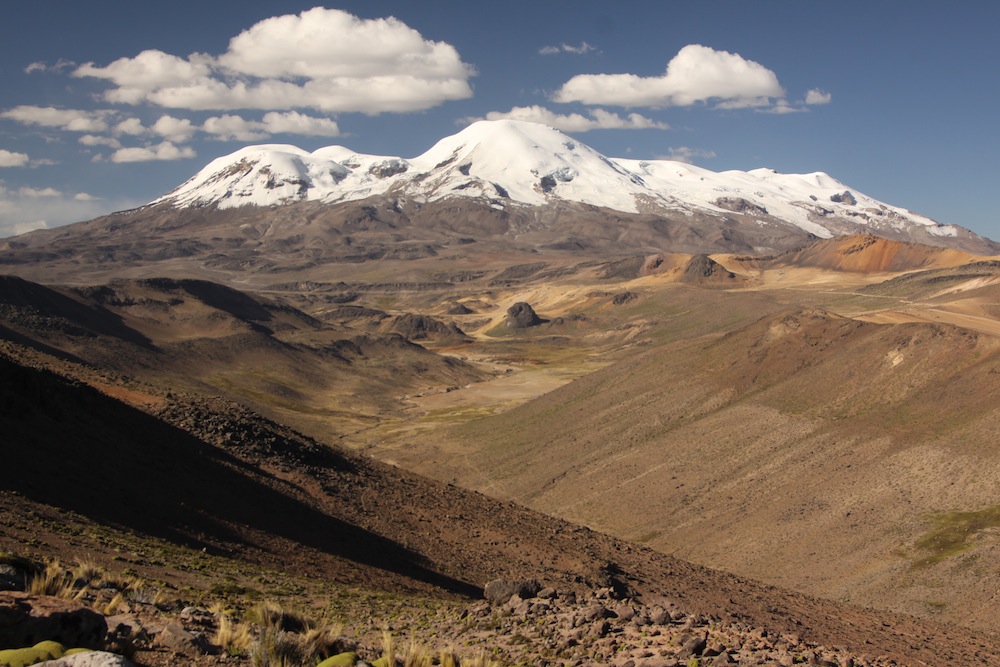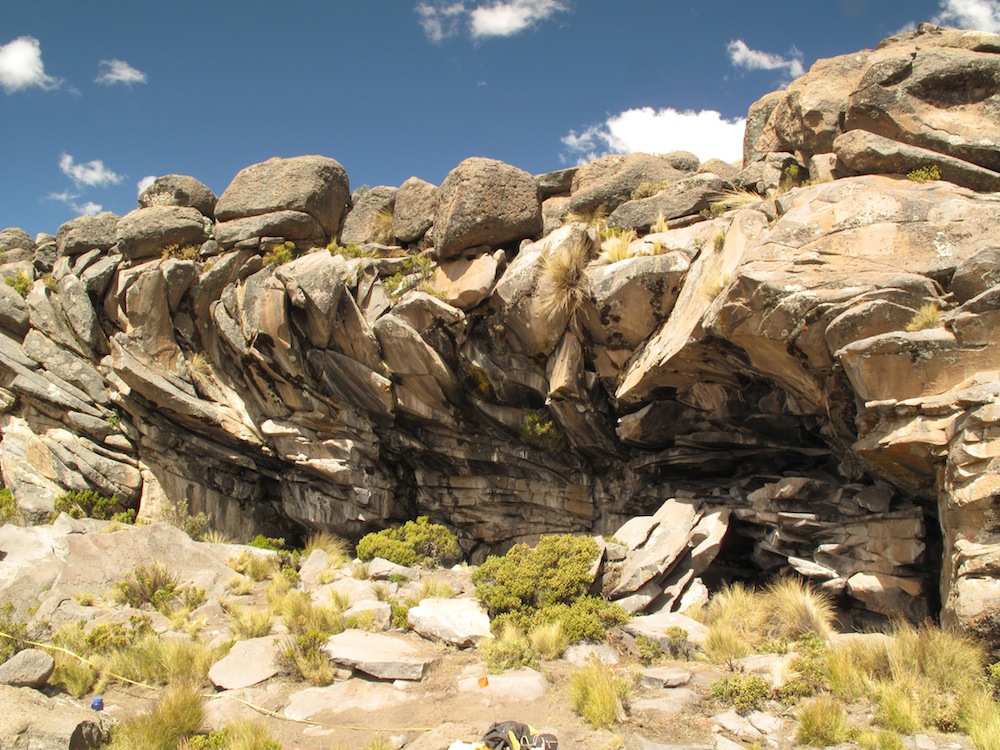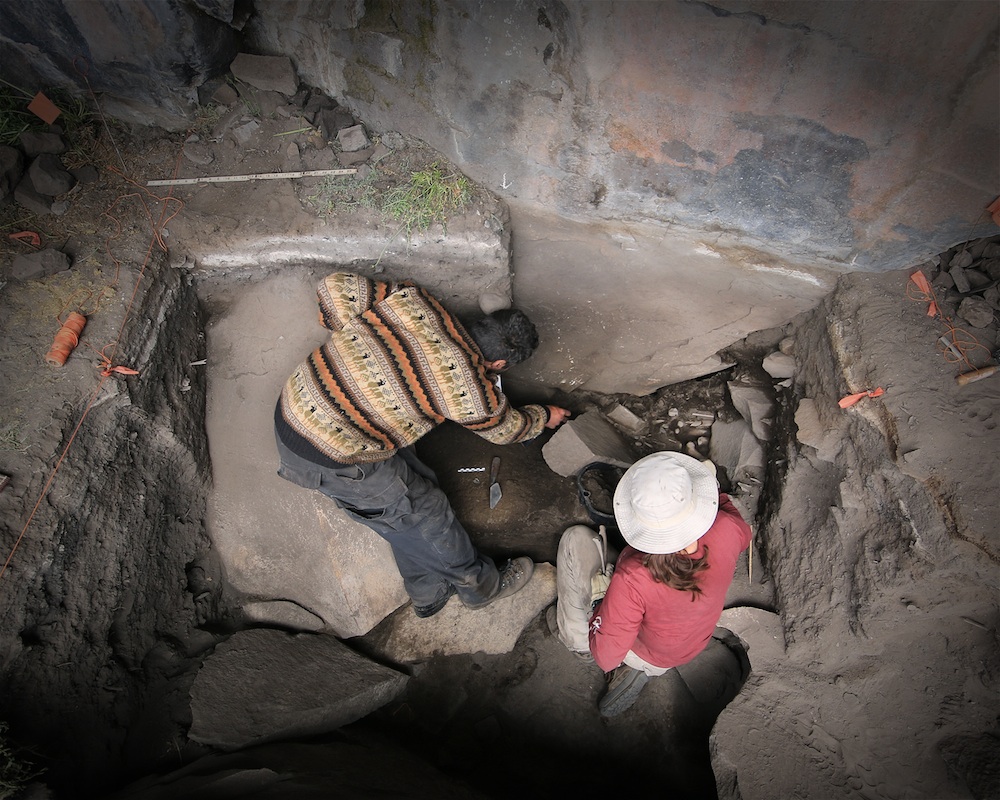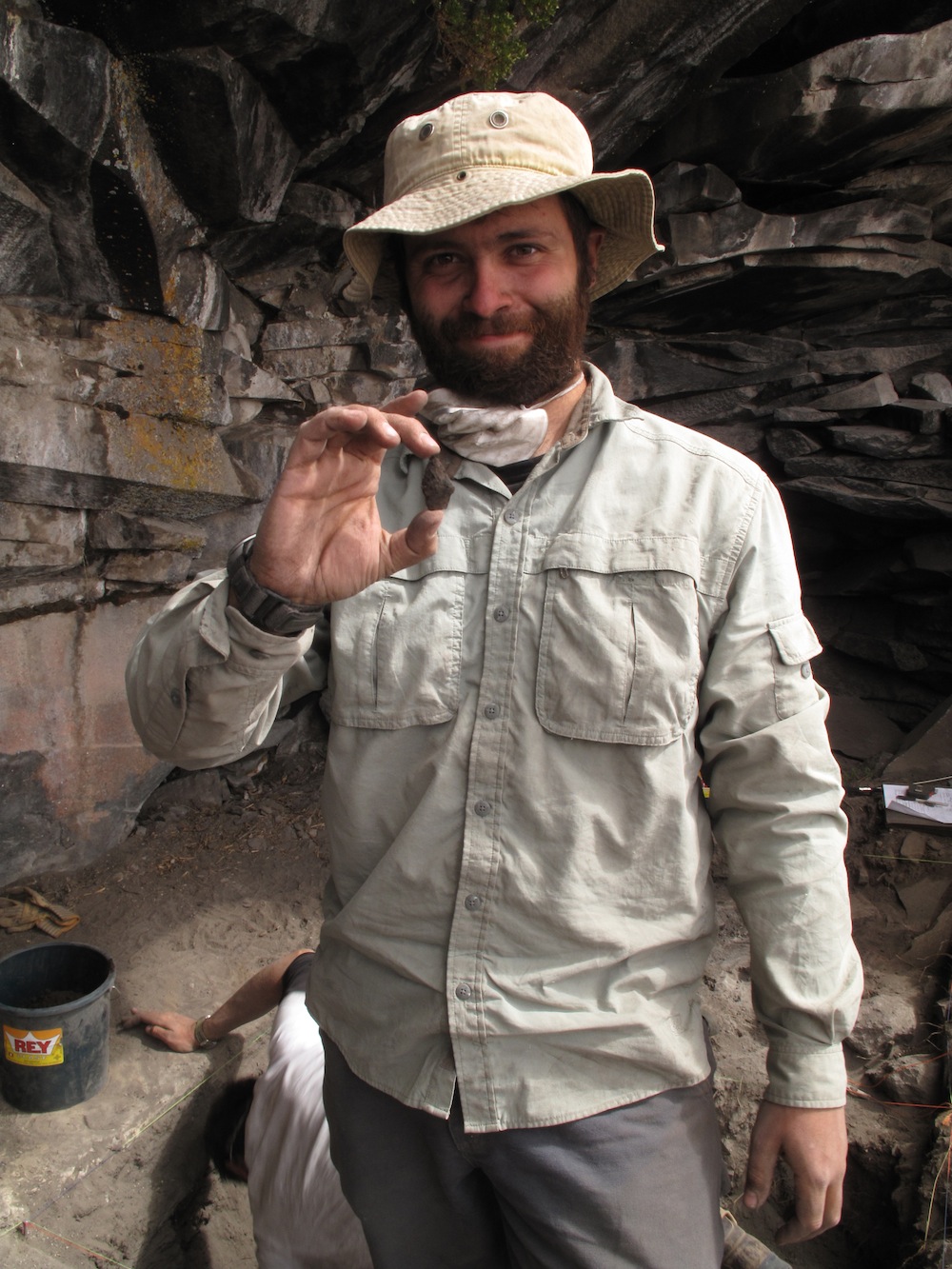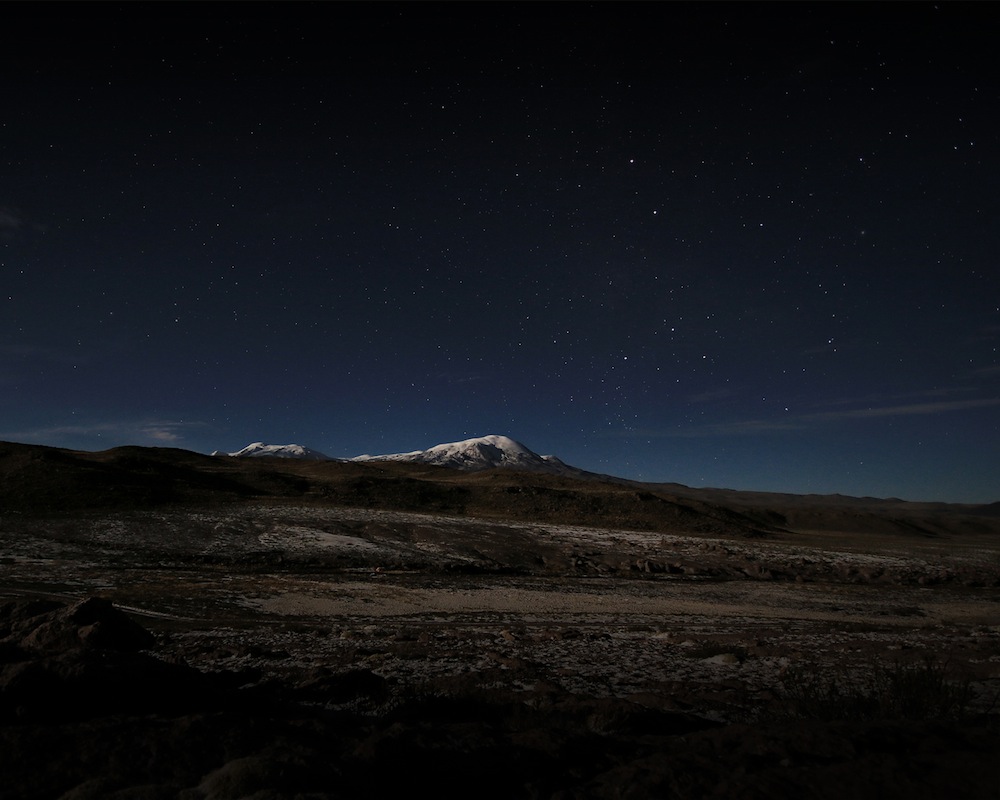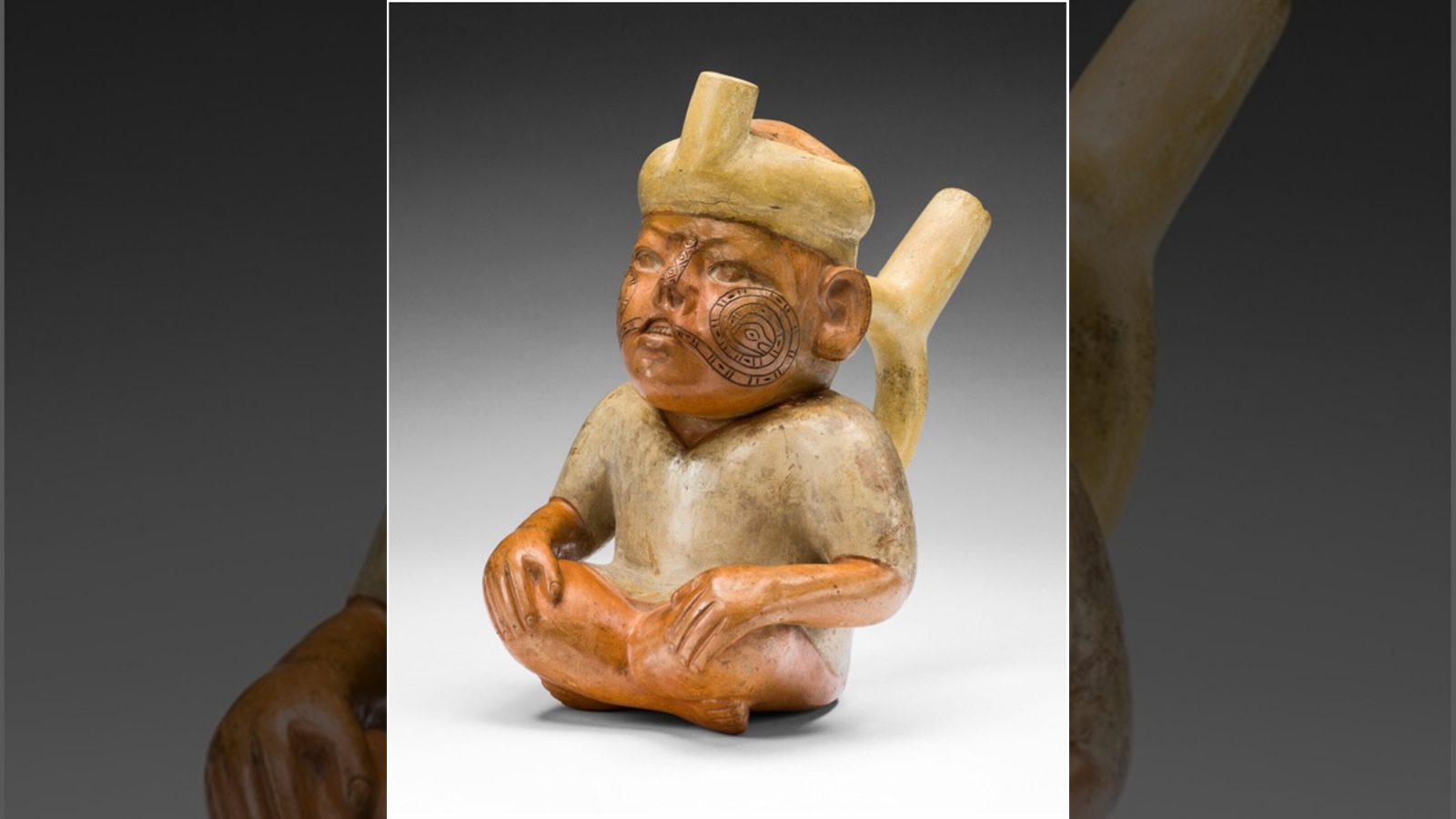Archaeologists have unearthed the oldest evidence yet of extremely-high-altitude human settlements. The sites, which are around 12,000 years old, were found on a 14,700-foot (4,500 meter) plateau ringed by volcanoes. In addition to a rock shelter with evidence of thousands of years of occupation, the researchers also found hundreds of stone tools and animal bones. [Read the full story on the high-altitude settlements]
Highland plateaus
In the 1990s, archaeologist Kurt Rademaker and his colleagues discovered an obsidian tool at a coastal fishing site that was 13,000-years-old. Because obsidian is a volcanic rock, they wondered how the obsidian reached the coast. They traced the rock back and found it originated in the Pucuncho Basin (shown here), an extremely high-elevation grassland fringed by volcanoes. (Photo credit: Kurt Rademaker)
Rockshelter
The team began surveying the area and discovered a rockshelter, which they called Cuncaicha rockshelter, with two alcoves that showed evidence of ancient human occupation. (Photo credit: Kurt Rademaker)
Excavations begin
The rockshelter had soot-blackened ceilings and burnt detritus from campfires, as well as rock art on the walls. Carbon dating revealed that the site was first occupied around 12,000 years ago and was used for thousands of years after. Here, archaeologists excavate the site. (Photo credit: Kurt Rademaker)
Get the world’s most fascinating discoveries delivered straight to your inbox.
Rockshelter occupation
The rockshelter may have been used as a temporary basecamp by herders to shelter from the rain, the researchers speculate. However, it's not clear whether the people who sheltered there lived all-year-long in the mountains, or whether they moved to lower elevations, or even the coast, once the whether turned cold. (Photo credit: Walter Beckwith)
Stone tools
In a nearby area, the team uncovered an open-air workshop with hundreds of stone tools, including scrapers, bifaces and spear points. The workshop was also close to the rocky outcropping where the obsidian tool from the coast originated. Here, researcher David Reid holds up a stone tool found at one of the excavation sites. (Photo credit: Kurt Rademaker)
Animal bones
The ancient occupants also left their mark in the animal bones found at the sites. The animal bones had signs of being butchered and cooked, and came from vicuna, the wild ancestors to alpaca, similar creatures called guanacos, and taruca deer. Here, vicuna gather in the Andean highlands. (Photo credit: Kurt Rademaker)
High grassland
Here, a picture of the Pucuncho Basin at night. The basin is a grassland surrounded by 21,000-foot (6,400 meters) volcanoes, and the arid climate is similar to that found in Chile's Atacama Desert. (Photo credit: Walter Beckwith)
Follow Tia Ghose on Twitter and Google+. Follow Live Science @livescience, Facebook & Google+.

Tia is the editor-in-chief (premium) and was formerly managing editor and senior writer for Live Science. Her work has appeared in Scientific American, Wired.com, Science News and other outlets. She holds a master's degree in bioengineering from the University of Washington, a graduate certificate in science writing from UC Santa Cruz and a bachelor's degree in mechanical engineering from the University of Texas at Austin. Tia was part of a team at the Milwaukee Journal Sentinel that published the Empty Cradles series on preterm births, which won multiple awards, including the 2012 Casey Medal for Meritorious Journalism.


